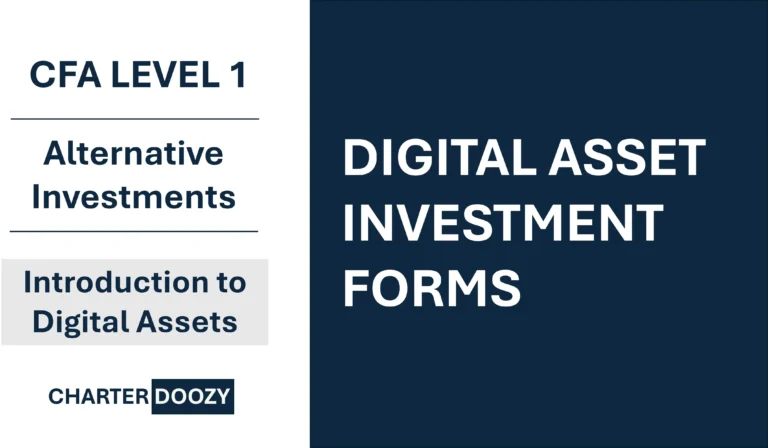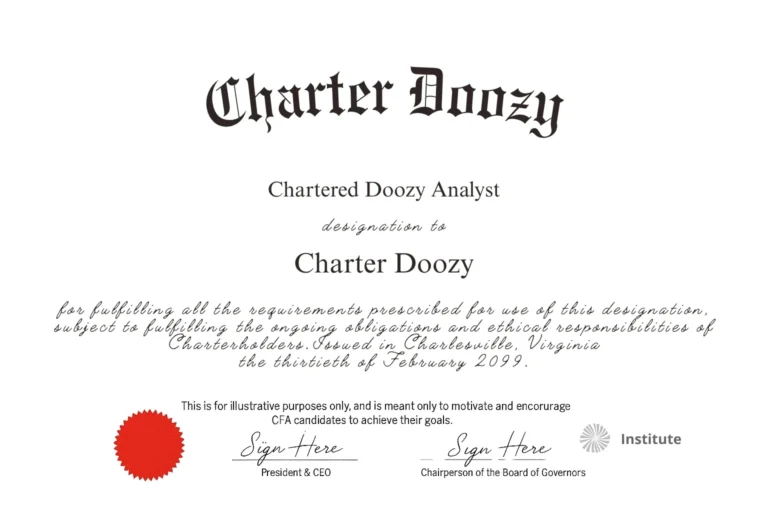Transcription
[00:00:00] Slide 2 – Big Picture Overview
How’s it? We’re now gonna deep dive into digital asset investment forms.
So as investors, we can access digital assets effectively in two ways. The first is directly the second indirectly. So direct investment means holding the actual token, like for example, holding Bitcoins in your own wallet. Indirect investment, that means using more familiar financial instruments. Like ETFs listed equities or even derivatives to get exposure, but without handling the tokens themselves. So why does that matter? Because the form of your investment actually affects the risk, the regulatory treatment, the liquidity, and the suitability for your clients or for your portfolio.
[00:00:53] Slide 3 – Direct Investment in Digitial Assets
Okay, first up, direct investment. This means buying the actual token, so the bitcoin, the ether, the meme stock, et cetera, on a crypto exchange, and then storing it in a digital wallet so you’re not just exposed to the assets, but you’re actually owning the asset itself. So that gives you the full upside, but it also comes with the full risk.
Some examples, if you lose your private keys, bang, the asset’s gone. If your wallet gets hacked, there’s no insurance against that. Also, regulation is still catching up, so direct investment is high risk, high reward.
[00:01:32] Slide 4 – Indirect Investment in Digital Assets
Okay, now let’s look at indirect forms of investing in digital assets. These do not require owning the tokens themselves, so you might buy a public equity, like a crypto mining firm, or invest in a crypto ETF that perhaps tracks prices of a bundle of tokens. You can also use futures and options or invest through a hedge fund or other private vehicles.
The key here is that. You’re not owning the asset, but you are getting exposure to the asset. Um, and that often comes with lower operational complexity and fewer custody issues, but the relationship to the actual digital assets is obviously then less direct. So this is maybe analogous to a property investment if you want to have that brick and mortar feeling and, and actually have the asset itself in your possession.
Well, that would be direct investment. If you’re buying property through a fund, well, that’s indirect investment. You’re getting the exposure, but not the ownership.
[00:02:36] [00:02:36] Slide 5 – Exchange Traded Products (ETPs)
All right. Now let’s dig into ETPs exchange traded products. So these are popular gateways for traditional investors. Why? because they trade just like stocks on a traditional exchange. So some ETPs are backed by physical crypto holdings, like maybe an ETF has got a holding of stocks in the background and others are built on futures contracts.
So there are spot crypto ETPs. There’s futures based ETPs. Either way, they let investors access crypto returns using existing brokerage accounts. So they trading these things as they would any other asset on a, on a, on a normal brokerage account without managing the complexities, which can come with crypto investing or crypto holding, such as private keys and wallets.
[00:03:28] [00:03:28] Slide 6 – Crypto Derivatives
All right, so derivatives. Now take us a step further into sophistication. So you can trade futures, options swaps on regulated exchanges like the CME or on crypto native platforms like Binance. So they offer leverage, shorting, and complex strategies that would come with the world of derivatives, but that comes with higher margin requirements, even more volatility and greater liquidity risk.
So this is where a strong grasp of derivatives really helps. And obviously as a CFA candidate, this is something you would be expected to have.
[00:04:08] Slide 7 – Public Equities with Crypto Exposure
Okay. Something to bear in mind is you don’t always need to invest in crypto directly to get crypto exposure. So the analogy here might be to get gold exposure, you don’t necessarily have to hold gold. You don’t even necessarily have to hold gold derivatives. But you could, for example, invest in a gold mining operation and indirectly therefore get exposure to, um, the gold price through obviously the, the revenue streams of that business.
So similarly with crypto, some publicly listed companies, for example, Micro Strategy, hold significant crypto directly on their balance sheets. Others operate, um, around the ecosystem, the crypto ecosystem. So for example, mining businesses, blockchain infrastructure businesses, or crypto services. So these stocks would obviously then behave differently from a pure crypto asset, like a token or a coin.
Because why? They’re also impacted by traditional business factors like stock market trends and management decisions. So the real exposure you’re gonna get is obviously linked to crypto, but it’s diluted and perhaps a bit more complex to unpack and understand that.
[00:05:24] Slide 8 – Private Investment Vehicles[00:05:24]
So high net worth investors might consider private investment vehicles like crypto hedge funds or blockchain VC funds. So these offer early access to crypto and blockchain innovations, but they’re typically illiquid. They may charge half fees and are likely regulated. They’re often structured as private placements or limit limited partnership.
Um, and so what these mean is that they’re typically not suitable or even available to all investors, um, and only just more sophisticated, high net worth individuals. But they do open the door to pre token stage opportunities and startup funding rounds. So what all of this means is that private investment vehicles may be put in place to access elements of the crypto universe, which you and I may not be able to access directly, but through pooling funds of high net worths together, these opportunities for outsized returns may be available, to sophisticated investors.
[00:06:34] Slide 9 – Custody Solutions & Wallet Types
Just like in a divorce, custody is a major concern in crypto and custody here does not refer to who gets to keep the children custody. Here is where the assets physically sit and how they are looked after protected insured, et cetera.
So in terms of wallets, you get two types of wallets. There are hot wallets which are connected to the internet and cold wallets, which are offline and therefore much more secure retail investors, like you and I, if we’re gonna invest in our personal capacities, would often use hot wallets just because they’re convenient, um, and easy to use.
But institutional investors typically require third party custodians with robust security and compliance systems, as you can imagine. So as a professional, you must understand the risks and trade offs of each type of wallet or different solutions in terms of where you can house the asset.
Cold wallets obviously are safer, um, because they’re not connected to the internet, but there are less liquid. Hot wallets are faster, but more vulnerable. Again, because they’re connected to the internet and things like hacking, et cetera. Phishing scams are definitely not unheard of in the world of digital assets.
[00:07:53] Slide 10 – Regulation of Investment Forms
Now my favorite topic regulation. Uh, yes, I am being facetious. So regulation plays a massive role in how you access digital assets. So direct token ownership might be lightly regulated, regulated, for example, or even unregulated in some countries. But typically, once you step into ETPs and derivatives, you’re now likely dealing with securities or commodity regulators, jurisdictions will differ widely from country to country, from jurisdiction to jurisdiction, and regulatory clarity is actually still evolving. And so it’s actually quite hard to bed it down because it keeps changing depending on location, literally on a week by week, month by month basis in some instances.
And so that’s a key consideration for anyone who, for example, is managing client money, trying to build a product. Let’s say that hedges out cryptocurrency risk or simply trying to stay compliant. Just tracking and being able to follow and to stay compliant and to manage and monitor these changes in real time is something obviously as a professional investor you need to be aware of and an additional layer of complexity which comes into play with digital assets in the different investment forms.
[00:09:13] Slide 11 – Key Takeaways
Here we go. Let’s put it all together – now with a few key takeaways. Number one, direct and indirect investments offer different risk and return profiles as well as operational implications. Secondly, ETPs and derivatives give you convenient and tradable exposure to crypto markets. Number three, public equities, private funds.
These provide alternative, sometimes diluted crypto exposure.
Lastly, custody and regulation are critical to investment, suitability, as well as success.
[00:09:50] Slide 12 – Practice Question 1
Now is an opportunity for you to test your understanding with a couple of simple questions. As usual, if you would like pause these if you need the time to read through, make up your mind and decide. So just feel free to pause the video at any stage. Let’s begin, number 1 -An investor want full ownership of a digital asset and control of the private keys.
So which form is most appropriate?
[00:10:19] Slide 13 – Solution 1
The correct answer is the direct token purchase. This obviously gives the investor full control over the asset, but also full responsibility.
[00:10:30] Slide 14 – Question 2
Next question, which of the following is an advantage of crypto ETPs over direct crypto, ownership?
[00:10:40] Slide 15 – Answer 2
And like we said. The correct answer here is C, the ease of access via a brokerage account, so as we said, ETPs make it easy to get exposure without handling wallets or private keys or anything like that.
[00:10:56] Slide 16 – Question 3
Here’s one on derivatives. Futures and options on cryptocurrencies are commonly used for what purpose?
[00:11:06] Slide 17 – Answer 3
Correct answer is B -portfolio insurance and speculation. So these tools allow investors to hedge or speculate. So either remove risk or increase risk, obviously depending on their market view and what they’re trying to achieve.
[00:11:23] Slide 18 – Question 4
Question number four. Let’s talk now early stage investing. Which investment form is most likely to provide exposure to early stage blockchain startups?
[00:11:35] Slide 19 – Answer 4
We did cover this, and it is private investment vehicles. So for example, VC funds and hedge funds. They target those pre token projects, which typically aren’t accessible to the public.
[00:11:49] Slide 20 – Question 5
And last one, a cold wallet is best described as.
[00:11:54] Slide 21 – Answer 5
And like we said, it’s cold because it’s offline and secure. Offline storage for digital assets.
So it was number A, cold wallets are disconnected from the internet to minimize hacking risk.
[00:12:08] Slide 22 – Final Summary
Great. Well done. You’ve gotten to the end of the video. Let’s summarize what we’ve learned. Number one, the difference between direct and indirect digital asset investments. Two, how to use ETPs derivatives, public equity and private funds. Three, importance of custody, hot versus cold wallets, and how to protect your holdings.
And finally, why regulation matters across investment types as well as jurisdictions.
I hope you enjoyed that. I hope you learned something, and I’ll see you in the next video.

Buy the Hype, Hold the Keys: How Investors Are (Really) Getting Into Crypto
What CFA Candidates Must Understand About Exposure, Custody, and Regulation
When a friend tells you they “bought some crypto,” what do they actually mean?
Did they buy Bitcoin on a centralized exchange? Are they staking Ethereum on a DeFi protocol? Did they get rugged on some obscure memecoin? Or are they holding a crypto-themed ETF in their retirement account?
Because here’s the truth: There is no single way to invest in digital assets.
There are a dozen ways to gain exposure—direct and indirect, liquid and illiquid, regulated and…well, not so much. And each comes with its own blend of risk, control, cost, and complexity.
That’s why this article exists: to cut through the noise and give CFA candidates (and other serious investors) a grounded framework for understanding how digital asset investments are made. Not just the coins, but the rails, wrappers, and regulations that make them investable.
Let’s break it down.
Direct Investment: Buying the Underlying Asset
This is the purist approach.
When you directly invest in a digital asset, you’re acquiring the token itself. You own the private keys. You control the wallet. You can move, stake, or sell the asset freely.
Examples
Buying BTC or ETH on a centralized exchange (e.g., Coinbase, Binance)
Transferring assets to a custodial or self-custody wallet
Engaging with DeFi protocols, staking, or governance voting
Benefits
Full exposure to price movements
Often lower fees and no fund manager cut
Access to network-native benefits (staking rewards, governance votes)
Risks
You’re responsible for custody and security
Regulatory risk is real
Tax reporting can be complex
With great power comes great irreversibility. Lose your private key, lose your assets.
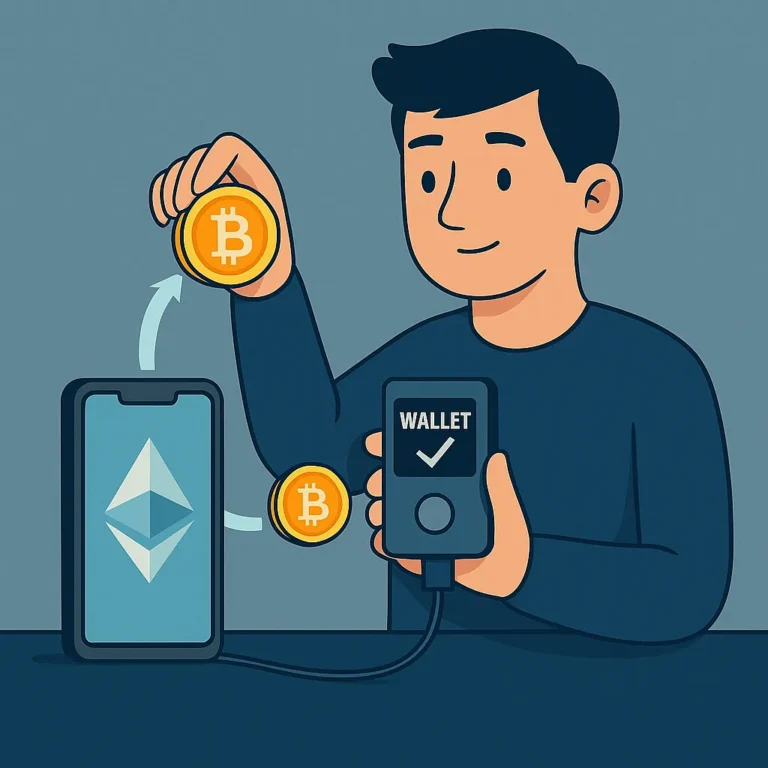
Indirect Investment: Let Someone Else Handle the Complexity
Not every investor wants to deal with wallets, gas fees, or on-chain governance. That’s where indirect exposure comes in.
Forms of Indirect Investment
Cryptocurrency ETFs (e.g., spot or futures-based Bitcoin ETFs)
Crypto trusts (e.g., Grayscale Bitcoin Trust)
Closed-end funds or hedge funds with crypto exposure
Thematic stocks: miners, exchanges, blockchain developers
Why It Matters
Exposure through regulated, familiar vehicles
Tradeable via brokerage accounts
Professional custody and management
Trade-Offs
Higher fees and tracking error
Delays in NAV updates
No staking or governance rights
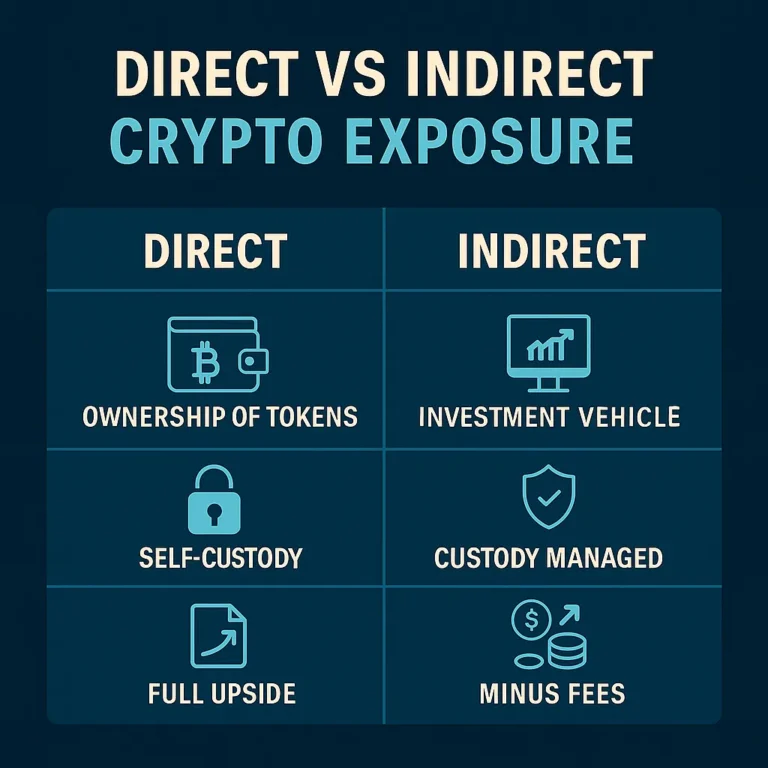
The Rise of Exchange-Traded Products (ETPs)
ETPs are the bridge between traditional finance and digital assets. They track the price of a digital asset and trade on a stock exchange.
Types of ETPs
ETNs (Exchange-Traded Notes)
ETFs (Exchange-Traded Funds)
ETCs (Exchange-Traded Commodities)
Benefits
Transparency (clear NAVs, audited holdings)
Liquidity (traded on regular exchanges)
Professional custody
Risks
Basis risk with futures-based ETPs
Regulatory limitations depending on jurisdiction
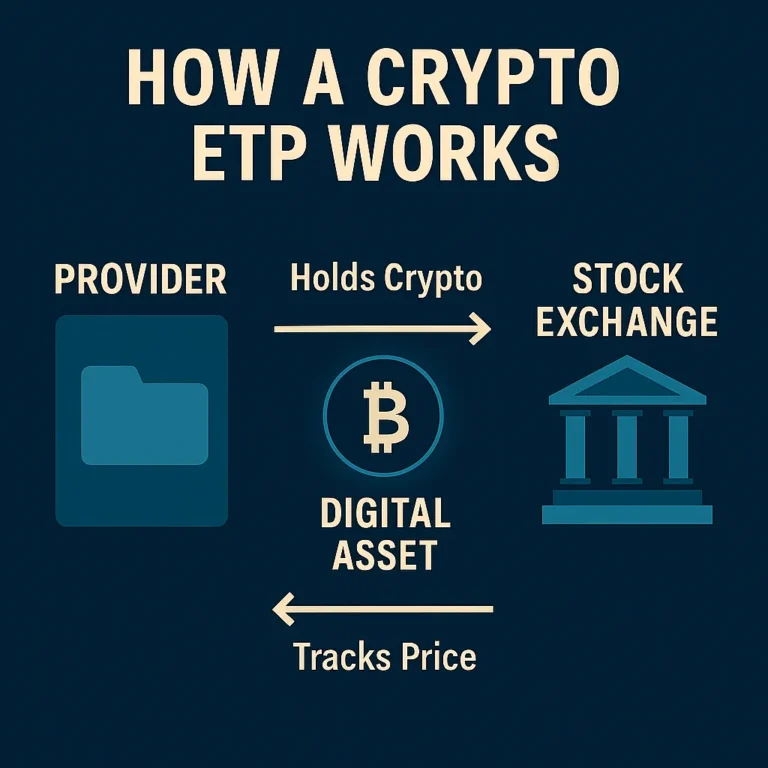
Tokens, Trusts, and Thematic Bets
Not all crypto investments are coins or ETFs. Some innovative forms include:
Types
Security Tokens: Represent ownership of equity, debt, or revenue
Utility Tokens: Offer network services or access
Governance Tokens: Let holders vote on protocol upgrades
Tokenized Funds: Fund structures deployed on-chain
Even digital collectibles (NFTs) are part of this landscape.
Risks and Challenges
Illiquidity
Valuation ambiguity
Evolving regulation
But also: high upside potential.
Custody: The Invisible Pillar of Digital Asset Investing
In traditional finance, you rarely think about custody. In crypto, it’s foundational.
Why Custody Matters
Determines true ownership
Influences security and recoverability
Enables or limits access to staking and governance
Models
Self-Custody: Full control (hardware wallets, seed phrases)
Third-Party Custodians: Institutional storage solutions
Exchange Custody: Convenient, but carries counterparty risk
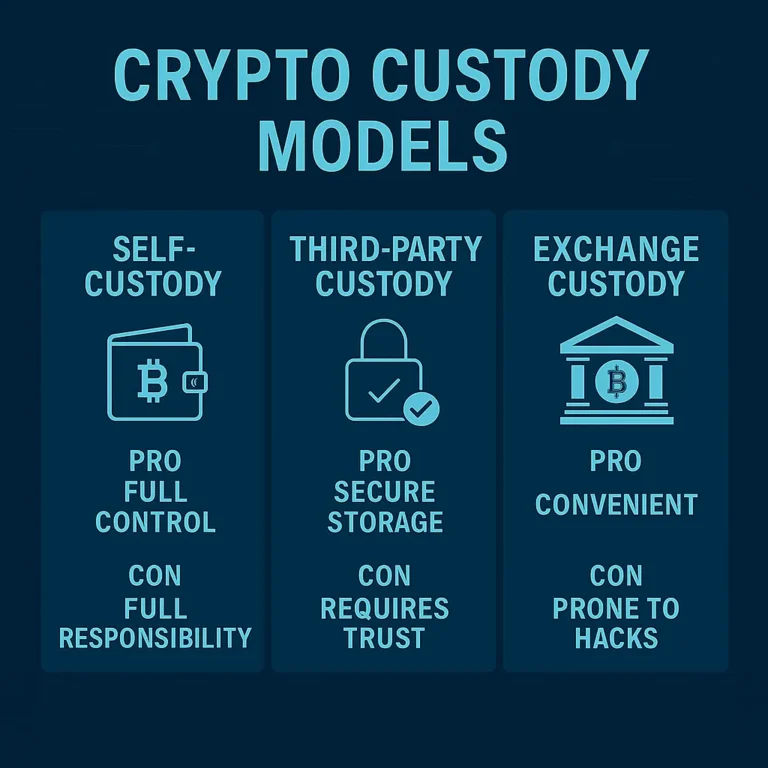
Post-Trade Processing, Compliance, and Exchange Listings
Behind every crypto transaction is a new kind of infrastructure.
Key Components
Clearing and Settlement: Blockchain-native T+0 speed
AML/KYC Compliance: Mandatory for regulated providers
Exchange Listings: Influence liquidity and exposure
Execution speed is faster, but backend complexity increases.
Regulated vs Unregulated Investment Paths
One of the biggest decisions in crypto investing: inside or outside the regulatory perimeter.
Regulated Pathways
ETFs, ETPs
Broker-dealers
Qualified custodians
Unregulated Pathways
DeFi
Offshore exchanges
Peer-to-peer protocols
Implications
Investor protection
Legal enforcement options
Institutional eligibility
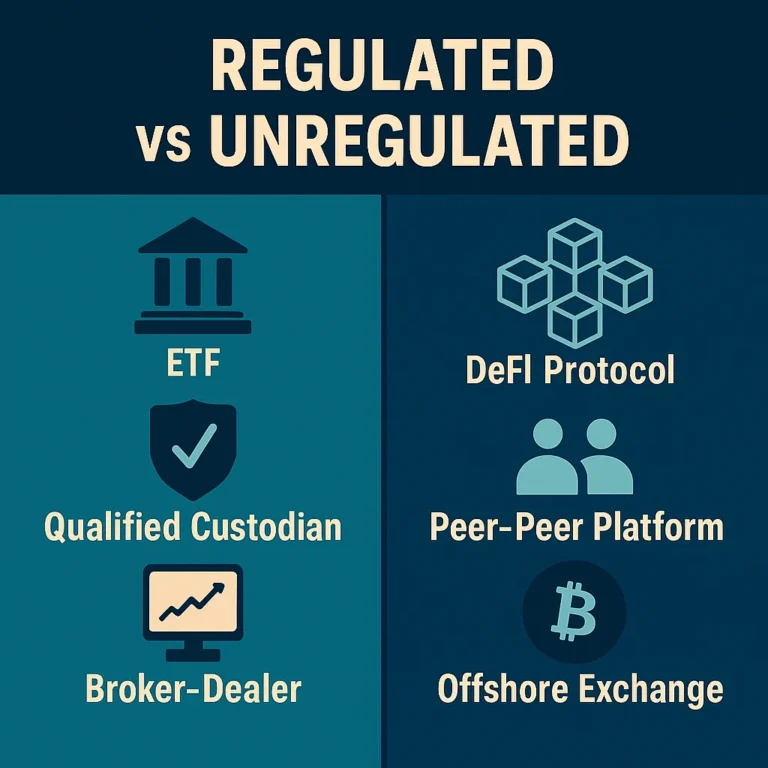
Summary Table
| Investment Form | Description | Investor Access | Risk Level |
|---|---|---|---|
| Direct Crypto Purchase | Buy/store tokens in wallets | Open to all | High |
| Staking/Yield Farming | Earn rewards from holding or lending crypto | Moderate | High |
| NFTs | Buy digital collectibles on marketplaces | Easy | Very High |
| ETFs/Trusts | Public market access to crypto exposure | Easy | Moderate |
| Futures & Options | Leverage-based trading instruments | Advanced/institutional | Very High |
| Crypto Stocks | Indirect exposure via equity markets | Easy | Moderate |
| Crypto Hedge Funds | Managed exposure to crypto universe | Accredited only | High |
| VC/Private Crypto Deals | Early-stage investments in crypto/blockchain startups | Institutional/accredited | Very High |
Key Considerations for Advisors and Analysts
If you’re guiding clients or building portfolios, ask:
What’s the investor’s risk tolerance and time horizon?
Is direct exposure appropriate, or should we use wrappers?
What is our custody solution? Who holds liability?
Are we staying within regulatory boundaries?
How is this investment taxed and reported?
Final Thoughts: Digital Assets Are an Investment Form, Not Just an Asset
This is what separates professionals from retail investors:
You’re not just buying crypto—you’re choosing a structure to gain exposure.
That choice affects:
Tax treatment
Custody and access
Legal protection
Alpha potential
As a CFA candidate or charterholder, you have the analytical toolkit to evaluate these choices. Use it.
Ask the tough questions. Understand the mechanics. Demand clarity.
Because the next time someone says, “I bought some crypto,” you’ll be ready to ask:
How?
And really mean it.
